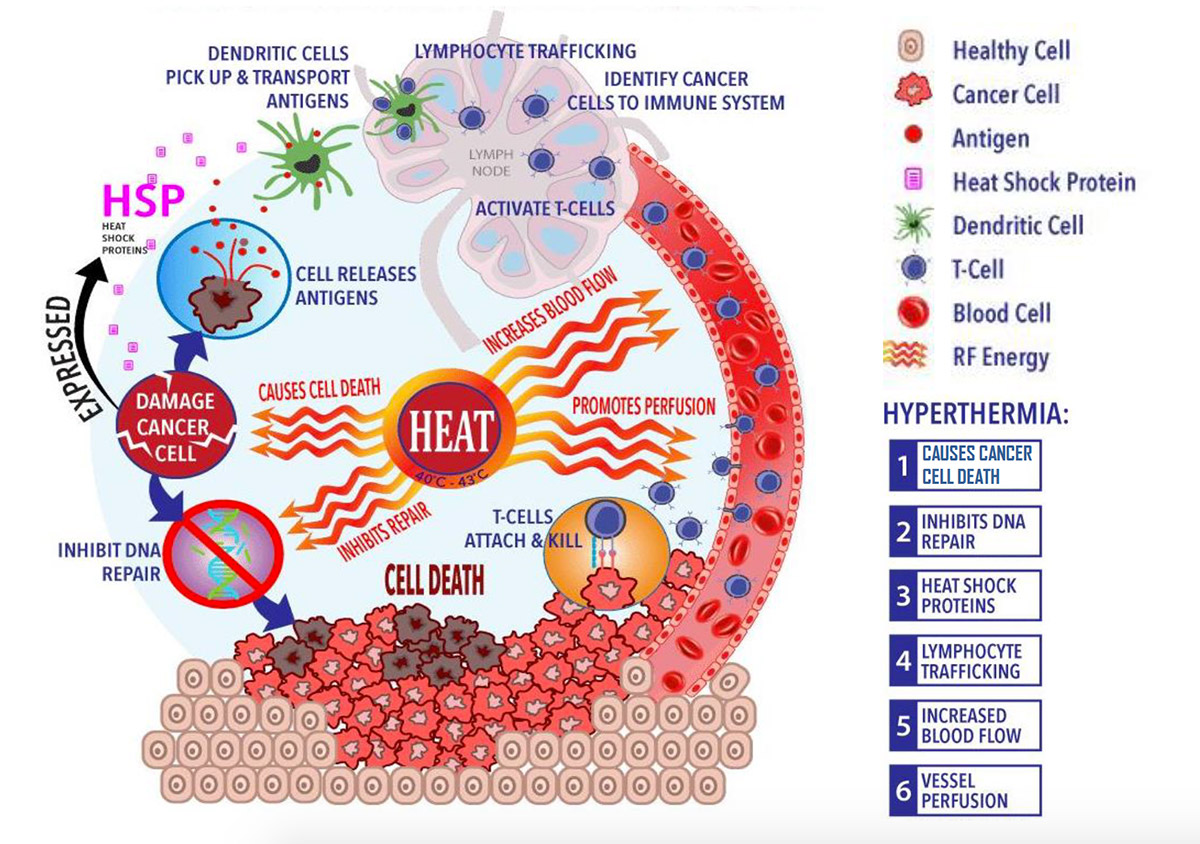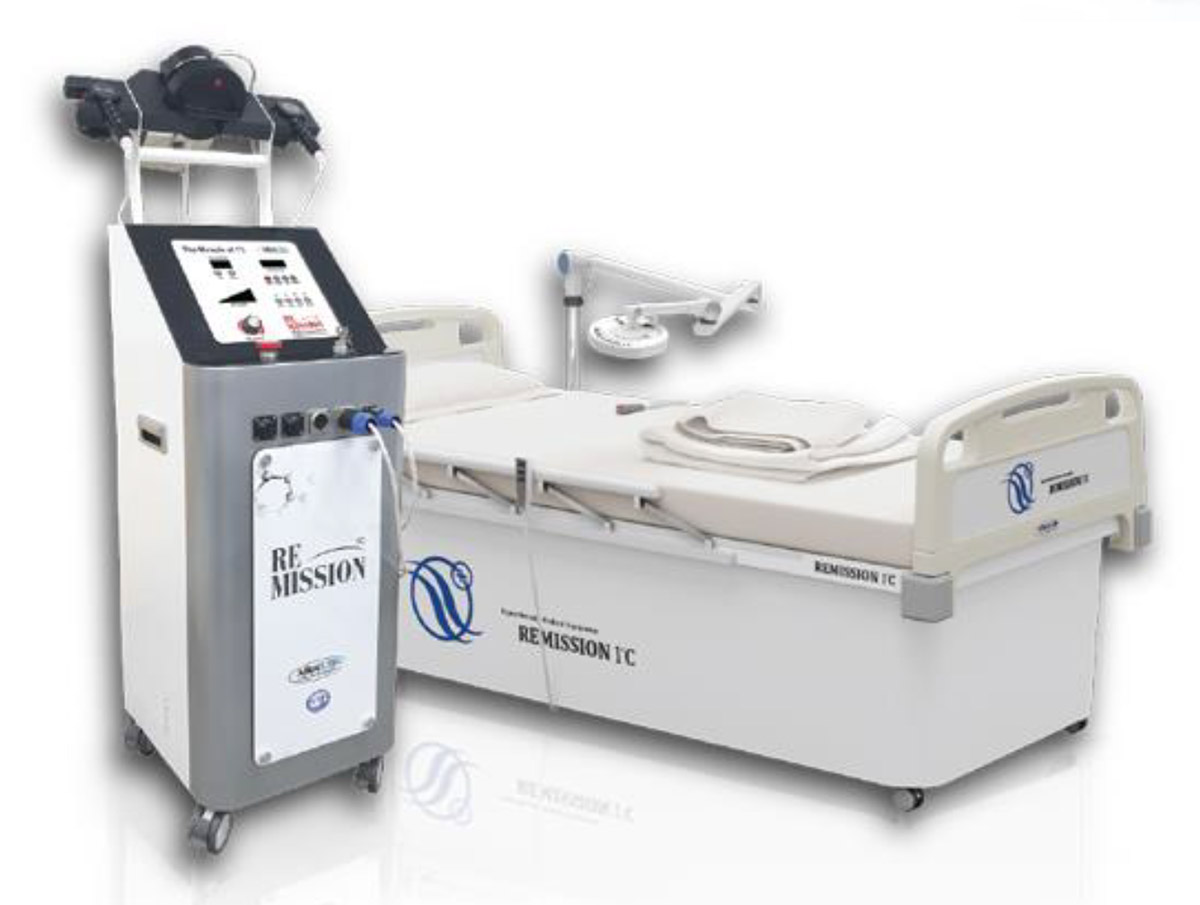Regeneration
Hyperthermia
Let us begin from the core principle of heat. Heat is energy, whether it is present in the body, on the surface of the sun or in a candle flame. This concept of heat in the body to create healing is a concept that ancient medicine has known for thousands of years (i.e the ancient Greeks and Romans used thermal baths to maintain vitality). Modern medicine, on the other hand, is just starting to embrace it and coining the use of heat for healing as hyperthermia therapy.
Body temperature is a part of our basic metabolism where energy output (i.e heat energy) affects every system and function within the body. We as warm-blooded mammals maintain a constant body temperature of around 37°C (±0.5°C) which is ideal for optimal function of all of our body’s physiological systems. It is also important to note that we have our own inbuilt thermostat called the hypothalamus (a part of our brain) which has a vital role in controlling many bodily functions among them is body temperature regulation.
If maintaining a constant body temperature is ideal for physiological functions, why our body gets a fever when we have the flu or an infection? The above-normal temperature (≥37.5°C) help defend against microbial invasion because they stimulate the motion, activity, and multiplication of white blood cells and increase the production of antibodies.
The difference between Hyperthermia and Fever
Many think that hyperthermia and fever is a medical term vs layman term. Which is not the case, when you have a fever; your hypothalamus actually increases your body’s set-point temperature. But in hyperthermia, your body temperature rises above a certain “set-point” that’s controlled by your hypothalamus.
Why hyperthermia therapy works then?
If our overall body temperature is lowered by just one degree, there is corresponding decline in immune system function by 40%. According to the ground-breaking research carried out by Dr. Nobuhiro Yoshimizu, the creator of the BioMat technologies, the good news is that the opposite is also true. Hyperthermia therapy not only raises immune system function in general, but an accumulating body of evidence suggests that a more active immune system is the precise catalyst needed for shrinking tumours.
Cancer tissues must live in an acidic pH environment and raising temperature will raise pH as well, creating an inhospitable environment for cancer cells to grow. Researchers found that “hyperthermia impact(s) the tumour microenvironment through temperature-sensitive check points that regulate tumour vascular perfusion, lymphocyte trafficking, inflammatory cytokine expression, tumour metabolism and innate and adaptive immune function.”
According to the NCI (National Cancer Institute), “ research has shown that high temperatures can damage and kill cancer cells, usually with minimal injury to normal tissues,” referring to a 2002 study done in the Netherlands that found that temperatures in the 40-44°C range were deadly to cancer cells. They also cite a German study published that same year “…by killing cancer cells and damaging proteins and structures within cells, hyperthermia may shrink tumours.” It should be noted that both of these studies quoted by the NCI where done within the context of hyperthermia being beneficial as an adjunct to traditional cancer treatments, including chemotherapy and radiotherapy.
In another study in 2013, published in the journal Cancer Immunology Research was able to pinpoint some precise mechanisms through which heightened temperature can lead to apoptosis (programmed cell death) in cancer cells. Other studies point to the effectiveness of hyperthermia as an adjunct to more traditional cancer therapies. A 2014 study done in Korea found that inducing a hyperthermic condition of 42°C was toxic not only to regular breast cancer cells, but breast cancer stem cells as well.
Localized Hyperthermia
Localized hyperthermia is a procedure where specific body tissues (particularly firm tissue, such as a tumour) as exposed to high temperature (45°C). It is based on the principle that if a rise in temperature to 40°C or higher can be sustained for one hour within a cancer tumour, the cells in that tumour will be destroyed.
Malignant tumours are especially responsive to localized hyperthermia. They tend to have bad blood circulation, making them more sensitive to changes in temperature. Microwave, radiofrequency, and ultrasound are some ways in which localized hyperthermia for cancer tumors can be administered.
Hyperthermia therapy beneficial for non-cancer recipients
Cancer patients are known to have lower basal body temperatures than those who are cancer-free therefore benefiting from the hyperthermia therapy where the body temperature is increased in a controlled manner. So is hyperthermia therapy beneficial for non-cancer patient? Definitely, as already mentioned earlier it activates the immune system and on top of that several disease conditions are also associated with lower than normal body temperature as one of their symptoms. These include but not limited to :
- Hypothyroidism
- Diabetes
- Alcoholism
- Kidney and liver disease or infections
- Sepsis
- Shock
- Asthma
- Stress
- Insomnia

In conclusion, hyperthermia is a powerful modality for creating alkalinity in the body, for boosting the immune system, and for preventing and possibly even reversing cancer. It is an ancient medical wisdom used throughout the centuries and thankfully we are now living in the era where modern medicine is beginning to delineate the benefits and usage of the most basic heat energy. In the words of Parmenides of Elea (late sixth or early fifth century BC) who is considered the founder of ontology or metaphysics and has influenced the whole history of Western philosophy, “Give me a chance to create a fever and I will cure any disease.”



